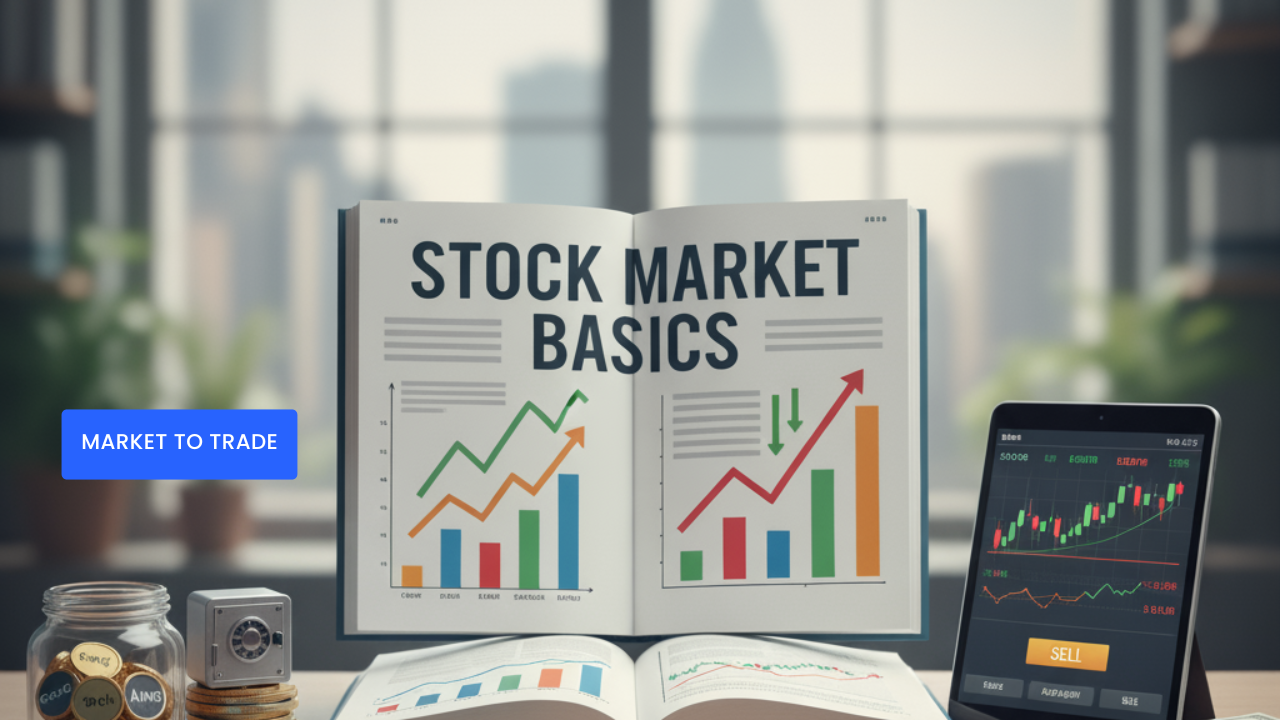Understanding How Stocks Work and Why Traders Love Them
The stock market is one of the most popular and influential financial markets in the world.
It’s where investors and traders buy and sell shares — small ownership pieces of companies — to profit from price changes and long-term growth.
While Forex focuses on currency exchange, the stock market centers around business performance, investor sentiment, and economic health.
At Holo Forex, we believe understanding how the stock market works helps traders make smarter, more diversified investment decisions.
Let’s explore the fundamentals — how stock trading works, what drives prices, and why it remains one of the most exciting markets to trade.
1. What Is the Stock Market?
The stock market is a marketplace where companies raise money by selling shares, and investors trade those shares to profit from price movements.
When you buy a share, you’re purchasing a small piece of ownership in that company.
If the company grows and performs well, its share price often rises — rewarding shareholders.
How It Works
Companies list shares through an IPO (Initial Public Offering).
Investors buy and sell those shares on stock exchanges.
Prices fluctuate based on supply and demand, company earnings, and investor sentiment.
Example:
If you buy Apple (AAPL) stock at $150 and it rises to $165, you earn $15 per share in profit — plus potential dividends.
2. Major Stock Exchanges Around the World
The stock market is global — and every country has its own major exchange.
Here are some of the largest and most influential:
| Exchange | Country | Example Index |
|---|---|---|
| New York Stock Exchange (NYSE) | USA | Dow Jones Industrial Average (DJIA) |
| NASDAQ | USA | NASDAQ 100 |
| London Stock Exchange (LSE) | UK | FTSE 100 |
| Tokyo Stock Exchange (TSE) | Japan | Nikkei 225 |
| Hong Kong Stock Exchange (HKEX) | Hong Kong | Hang Seng Index |
| Deutsche Börse (Frankfurt) | Germany | DAX 40 |
Fun Fact:
The NYSE and NASDAQ together represent over 40% of the world’s stock market capitalization.
3. Why Do People Trade Stocks?
Investors and traders enter the stock market for different reasons — from long-term wealth building to short-term opportunities.
A. Capital Growth
Buy low, sell high — the most basic and powerful way to profit from rising share prices.
B. Dividends
Some companies share a portion of their profits with shareholders regularly.
C. Trading Volatility
Active traders take advantage of daily or weekly price swings using technical analysis.
D. Portfolio Diversification
Adding stocks to a portfolio helps balance risk alongside other assets like Forex or commodities.
4. How Stock Prices Move
Stock prices change constantly due to supply and demand, influenced by both company-specific and global factors.
A. Company Performance
Strong earnings, new products, or expansions push prices up — weak results or scandals push them down.
Example:
If Tesla reports higher-than-expected profits, demand for its shares rises — driving prices higher.
B. Economic Conditions
Interest rates, inflation, and GDP growth impact investor sentiment and capital flow into stocks.
Example:
Lower interest rates encourage investors to move money from savings to stocks seeking higher returns.
C. Market Sentiment
News headlines, investor confidence, and even social media hype can create momentum in certain stocks.
Example:
Positive market mood can push tech stocks higher even without strong fundamentals.
5. Key Stock Market Indices
Stock indices represent the overall performance of groups of stocks within an economy or sector.
They help traders understand whether markets are trending up (bullish) or down (bearish).
| Index | Description |
|---|---|
| S&P 500 | Tracks 500 leading U.S. companies — benchmark for the U.S. market |
| Dow Jones (DJIA) | Represents 30 major industrial companies |
| NASDAQ 100 | Focused on top U.S. tech companies |
| FTSE 100 | Top 100 companies on the London Stock Exchange |
| DAX 40 | Leading German blue-chip companies |
Pro Tip:
When indices rise, it often signals economic optimism — when they fall, traders may seek safe havens like gold or Forex pairs.
6. Stocks vs. Forex — The Key Differences
| Feature | Stocks | Forex |
|---|---|---|
| Market Hours | Limited (based on exchange) | 24 hours, 5 days a week |
| Focus | Companies & industries | Global currencies |
| Leverage | Lower | Higher |
| Volatility | Medium | High |
| Ownership | Yes (shares) | No (speculation on price) |
| Best For | Investors, swing traders | Active traders, scalpers |
Pro Tip:
Many traders use both markets — Forex for short-term opportunities, stocks for long-term investment.
7. How to Start Trading Stocks
Choose a Regulated Broker — ensure access to stock CFDs or direct shares.
Learn the Basics — understand fundamentals and chart reading.
Use a Demo Account — test strategies without real money.
Start Small — begin with a few companies or indices.
Diversify — avoid putting all your capital in one stock or sector.
Key Takeaways
✅ The stock market allows investors to buy and sell company shares.
✅ Prices move based on earnings, economy, and investor sentiment.
✅ Major indices (S&P 500, FTSE 100, DAX) show market direction.
✅ Stocks and Forex can complement each other in a trading portfolio.
✅ Success in stocks starts with knowledge, patience, and discipline.
Final Thoughts
The stock market is more than numbers — it’s the story of businesses, innovation, and investor confidence.
Whether you trade individual shares or global indices, understanding how the market moves helps you make informed, strategic decisions.
At Holo Forex, we help traders learn how to combine different markets — using the lessons from Forex, stocks, and beyond — to build smarter, more balanced trading journeys.
Because the more you understand the markets, the more control you have over your financial future.


